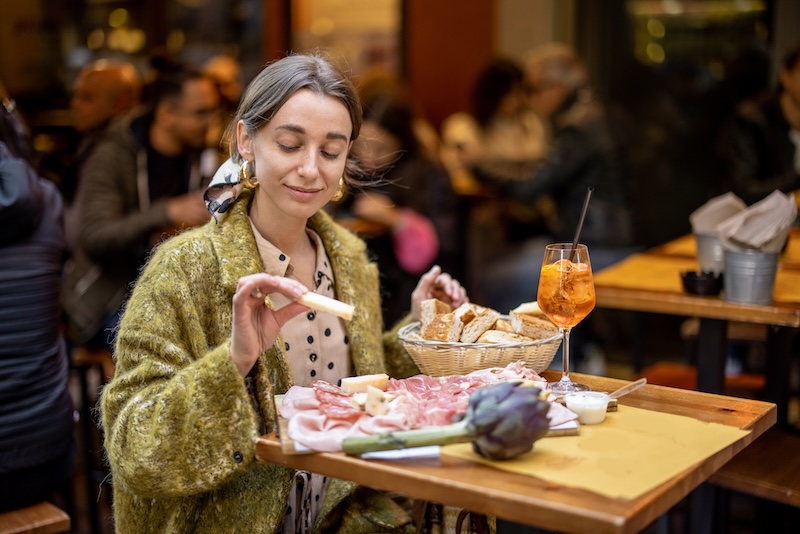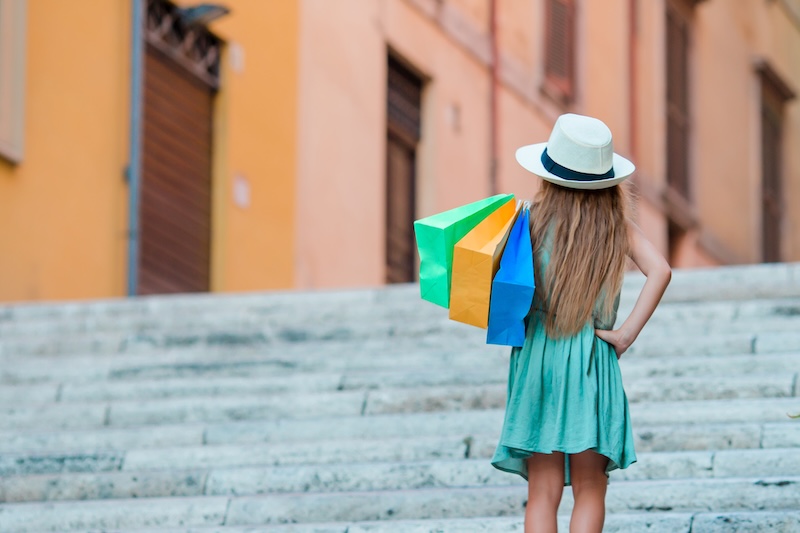Fine Restaurants
Discover Rome's exceptional dining scene, from world-renowned establishments to hidden culinary gems.
Explore Restaurants
Luxury Shopping
Experience Rome's premier shopping destinations, featuring luxury boutiques, flagship stores, and exclusive retail experiences.
Discover Shopping
Overview
Rome captivates discerning travelers with its extraordinary layering of history, where ancient ruins stand alongside Renaissance palaces and contemporary luxury. The Eternal City offers an intoxicating blend of archaeological wonders, world-class art, and sophisticated Italian style that has attracted cultured visitors for millennia. Beyond the monumental attractions, Rome reveals itself through hidden piazzas, aristocratic gardens, and neighborhood trattorias where culinary traditions have been perfected over generations. The city's unique appeal lies in how seamlessly it integrates the grandeur of its imperial past with the pleasures of modern Italian life—morning cappuccinos in baroque squares, evening aperitivos overlooking illuminated fountains, and the perpetual sense that around every corner awaits another masterpiece of art, architecture, or gastronomy.
Luxury Shopping Districts
Via dei Condotti, stretching from the Spanish Steps to Via del Corso, reigns as Rome's most prestigious shopping street. This pedestrian-friendly avenue hosts the flagship boutiques of Italian fashion houses including Gucci, Prada, and Bulgari, whose flagship store occupies a magnificent palazzo. The surrounding streets—Via Borgognona, Via Frattina, and Via del Babuino—form a luxury shopping triangle where Fendi, Valentino, and Dolce & Gabbana showcase their collections in architecturally stunning spaces.
Via del Corso offers a mix of luxury and contemporary brands along its lengthy stretch from Piazza del Popolo to Piazza Venezia. While more commercial than Via dei Condotti, it features significant stores from Italian and international designers, particularly near its northern end.
The Tridente area, formed by Via del Corso, Via di Ripetta, and Via del Babuino, creates Rome's golden shopping district. Here, luxury extends beyond fashion to include antique dealers, art galleries, and jewelers who have served Roman nobility for generations. Via Margutta, known for its art galleries and antique shops, provides a more intimate shopping experience with ateliers and boutiques occupying converted artist studios.
Local Artisans & Crafts
Rome's artisan traditions thrive in the workshops of Trastevere and Campo de' Fiori, where craftspeople maintain centuries-old techniques. Master leather workers create bespoke bags and shoes using methods passed down through generations, while bookbinders near the Pantheon produce hand-marbled papers and custom journals using traditional Italian techniques.
The neighborhood around Piazza Navona hosts several traditional mosaic workshops where artisans create intricate designs using the same techniques employed in ancient Roman villas. These studios often accept commissions for custom pieces that serve as unique mementos of Roman artistry.
In the Jewish Quarter, skilled goldsmiths and silversmiths continue traditions dating back centuries, creating both contemporary designs and reproductions of ancient Roman jewelry. The area also features workshops specializing in religious artifacts and ceremonial objects that showcase exceptional metalworking skills.
Upscale Dining & Culinary Scene
Rome's fine dining scene balances reverence for traditional recipes with innovative interpretations of Italian cuisine. Three-Michelin-starred La Pergola, perched atop Monte Mario, offers spectacular city views alongside chef Heinz Beck's refined Mediterranean cuisine. Glass Restaurant, overlooking the Roman Forum, provides a contemporary dining experience where modern Italian cuisine meets archaeological splendor.
Traditional Roman cuisine reaches its apex at establishments like Pipero and Flavio al Velavevodetto, where classic dishes like cacio e pepe and carbonara are elevated through perfect technique and superior ingredients. Il Pagliaccio holds a Michelin star for its creative approach to Italian flavors, while Metamorfosi showcases chef Roy Caceres' innovative fusion of Italian and international influences.
The city's wine bar culture offers sophisticated environments for experiencing Italian vintages. Il Goccetto near Campo de' Fiori maintains an extensive selection of natural wines, while Trimani Il Wine Bar combines a historic wine shop with contemporary cuisine. These establishments provide opportunities to explore lesser-known Italian varietals alongside celebrated producers.
For aperitivo culture, the rooftop terraces of luxury hotels offer unparalleled settings. The terraces at Hotel de Russie and Palazzo Manfredi provide sunset views over Roman landmarks while serving expertly crafted cocktails and small plates that exemplify Italian hospitality.
Must-See Attractions
The Vatican Museums house one of the world's greatest art collections, culminating in Michelangelo's Sistine Chapel ceiling. Private early-morning or after-hours tours provide intimate access to these treasures without crowds, allowing proper appreciation of works by Raphael, Bernini, and Caravaggio.
The Colosseum and Roman Forum require thoughtful exploration to appreciate their historical significance. Private archaeological tours with expert guides reveal hidden areas and provide context that transforms ruins into vivid recreations of ancient Roman life. The recently opened underground chambers and upper tiers of the Colosseum offer perspectives unavailable to general visitors.
Galleria Borghese showcases an extraordinary collection of Renaissance and Baroque art within a stunning villa setting. The required advance reservations ensure an uncrowded experience with masterpieces by Bernini, Titian, and Caravaggio displayed in intimate gallery spaces.
The Pantheon remains Rome's best-preserved ancient building, its perfect proportions and innovative dome continuing to inspire architects two millennia after construction. Early morning visits provide moments of contemplation in this temple-turned-church before tourist crowds arrive.
Villa Giulia houses the world's finest collection of Etruscan art, offering insights into the sophisticated civilization that preceded Roman dominance. The museum's garden setting and relatively low visitor numbers create a peaceful environment for appreciating these ancient treasures.
Markets & Unique Finds
The Porto Portese flea market operates Sunday mornings in Trastevere, offering everything from vintage clothing to antique furniture. While requiring patience and early arrival, the market rewards persistent shoppers with unique finds and negotiable prices.
Via dei Coronari specializes in antiques, with shops occupying Renaissance-era buildings along this atmospheric street near Piazza Navona. Dealers offer expertise in Roman antiquities, baroque furniture, and religious artifacts, though authentication and export permissions require careful attention.
Campo de' Fiori's daily market combines fresh produce with specialty food items, creating a sensory experience that captures Roman daily life. While tourist-oriented, careful selection yields excellent olive oils, dried goods, and seasonal specialties.
Culinary Specialties to Take Home
Roman specialties suitable for travel include guanciale (cured pork jowl essential for authentic carbonara), pecorino romano cheese, and artisanal pasta from historic shops. Specialty food stores around Campo de' Fiori and Testaccio Market offer vacuum-packed selections that travel well.
Extra virgin olive oil from Lazio producers provides an authentic taste of the region. Many shops offer tastings and ship internationally, ensuring safe transport of these liquid treasures. Specialty stores near the Pantheon focus on regional Italian oils with detailed provenance.
For wines, enotecas throughout the city offer expert advice on selections that travel well. Roman wines like Frascati and Cesanese del Piglio provide unique alternatives to more famous Italian regions. Many shops arrange international shipping for significant purchases.
Practical Travel Tips
Rome's historic center is best explored on foot, though comfortable shoes are essential for navigating cobblestone streets. Taxis are plentiful but traffic can be challenging; official white taxis should be used rather than unauthorized drivers. The metro system, while limited, provides efficient connections to major sites.
EU visitors can claim VAT refunds on purchases exceeding €154.94 from participating stores. The process requires passport presentation at purchase and validation at departure airports. Many luxury boutiques offer tax-free shopping services that simplify the process.
Restaurant culture expects leisurely dining, with lunch from 1-3 PM and dinner rarely before 8 PM. Reservations are essential for upscale establishments, particularly during peak tourist seasons. Tipping is modest—rounding up the bill or leaving 5-10% for exceptional service suffices.
Seasonal considerations impact both comfort and accessibility. Spring and fall offer ideal weather, while August sees many restaurants and shops close for vacation. Winter provides fewer crowds at major attractions but shorter daylight hours. Religious holidays and festivals can affect opening hours and accessibility to Vatican sites.
Dress codes at religious sites require covered shoulders and knees. Many upscale restaurants expect smart casual attire, particularly for dinner. Romans dress stylishly for all occasions, and visitors who follow suit receive better service and respect.
About Rome
Your guide to Rome's timeless elegance.
Quick Links
Featured Hotels
Travel Tips
- Best Time to Visit: April to June and September to November
- Currency: Euro (EUR)
- Language: Italian